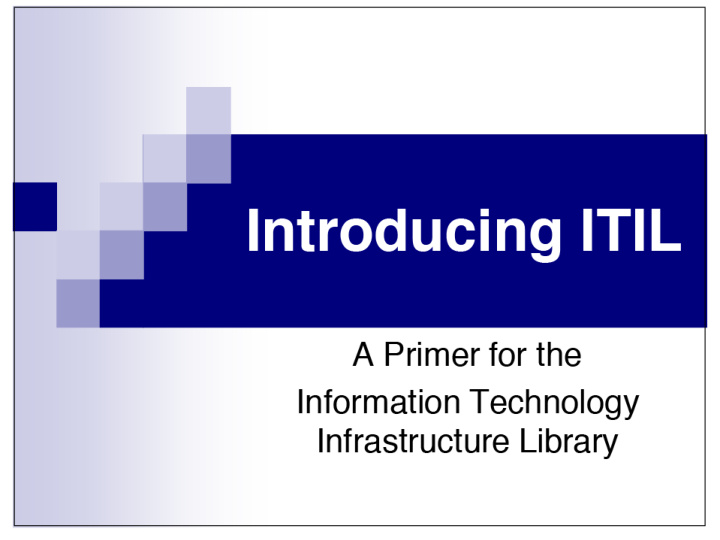



Training Objectives • Obtain knowledge of the ITIL terminology, structure and basic concepts and to comprehend the core principles of ITIL practices • To appreciate how a framework, process and procedures are essential in providing a stable quality service. • Discuss next steps in ITIL training
ITIL Who has heard of ITIL?
What does ITIL do? • Provides a best practice framework for identifying, planning, delivering, improving, and supporting IT services (i.e., IT Service Management). • Enables IT organizations to deliver services that satisfy the business’ needs and are aligned with the business’ goals. • ITIL framework describes the “what” of a service, not the “how”
IT Service IT organizations have traditionally focused on managing the infrastructure services and technology silos. ITIL suggests a more holistic approach to managing services from end to end.
IT Service Lifecycle ITIL is organized around a service lifecycle which includes service strategy, service design, service transition, service operation and continual service improvement.
Service Strategy Service strategy – understanding who the IT customers are, the service offerings that are required to meet the customers’ needs, the IT capabilities and resources that are required to develop these offerings, and the requirements for executing them successfully.
Service Design Service design ensures that new and changed services are designed effectively to meet customer expectations
Service Transition The service transition phase of the lifecycle the design is built, tested and moved into production to enable the business customer to achieve the desired value.
Service Operation Service Operation then delivers the service on an ongoing basis, overseeing the daily overall health of the service.
Continual Service Improvement Continual service Improvement (CSI) - CSI offers a mechanism for the IT organization to measure and improve the service levels, the technology and the efficiency and effectiveness of processes used in the overall management of services.
Benefits of ITIL Service Strategy • Design, development, and implementation Service Design • Design and development Service Transition • Development and design Service Operation • Delivery and support Service Improvement • Create and maintain value
Benefits of ITIL • Alignment with business needs • Negotiated achievable service levels • Predictable customer service with consistent processes • Efficiency in service delivery • Measurable, improvable services and processes • A common language for terms
Support and Delivery Process Service Support Functions: • Service Desk • Incident Management • Problem Management • Change Management • Configuration Management • Release Management Service Delivery Functions: • Availability Management • IT Services Continuity Management • Capacity Management • Financial Management • Service Level Management
Available Resources Lynda – ITIL Foundations with Mark Thomas 7 hour free course Axelos.com (Exam provider, white papers, training resources)
Recommend
More recommend